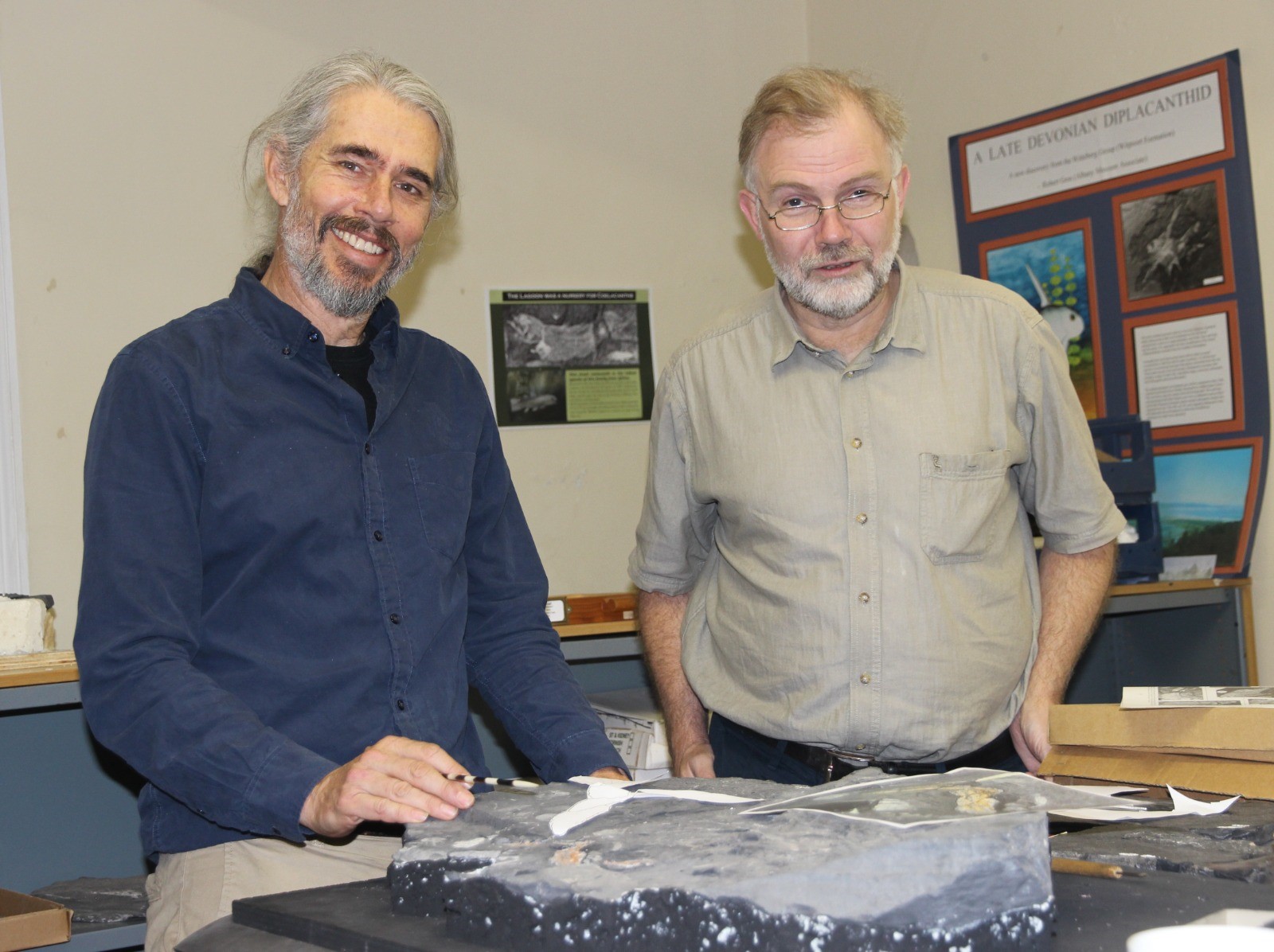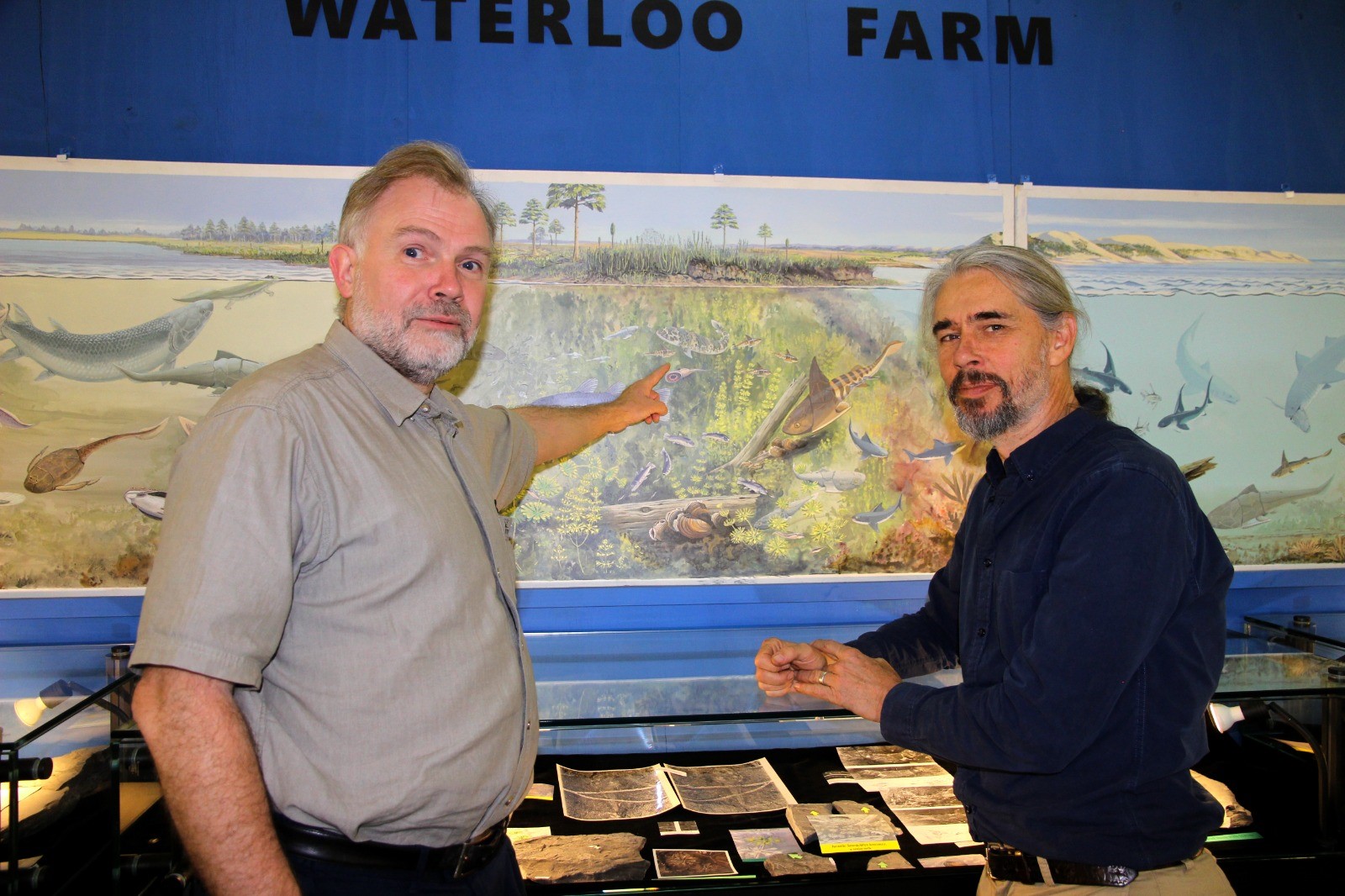By Steven Lang
World renowned palaeontologist, Prof Per Ahlberg of Uppsala University in Sweden gave a presentation entitled “The Waterloo Lagerstätte: a crucial data point in a world full of gaps” at Rhodes University on Wednesday. As a keynote speaker, he will deliver a specialised version of the presentation at the 22nd Conference of the Palaeontological Society of Southern Africa in Graaff Reinet next week.
Ahlberg is spending just over a week in Makhanda so that he can examine fossils unearthed at Waterloo Farm by local palaeontologist, Dr Rob Gess. The shale deposits on the outskirts of town are among the world’s richest and most comprehensive fossil sites of the Devonian period, about 360 million years ago.

Ahlberg referred to the deposits on Waterloo Farm saying that, “What’s really special about it is that you have everything in this one locality”. There are seaweeds, land plants, numerous kinds of fish and scorpions.
He went on to say that, “having a locality like that to work with also has a certain drawback, which is that you have all these very different kinds of fossils to study and of course nobody, but nobody’s going to be an expert on every single one”.
In order to address this challenge, over the years, Gess has systematically brought in collaborators with expertise in certain groups of fossils that he has discovered. Ahlberg is specialised in tetrapods, the first backboned land animals, and the lobe finned fishes from which they evolved,
Ahlberg says he first came to Makhanda in 2017 to work on tetrapod material and lobe finned fish and they were “sort of doing that systematically, but being like, you know, kids on Christmas morning we started with the most exciting ones. So we started with the tetrapods and published those in 2018”.
After the tetrapods, Gess and Ahlberg tackled giant predatory lobe finned fishes known as Hyneria – with an enormous head and a body length of a “couple of metres or more”. That research was published several years ago.
Currently the two palaeontologists are looking at a subtly different predatory lobe fin fish called a rhizodont. Ahlberg says they are examining the shoulder girdle of an early rhizodont from the Devonian Period that was probably about a metre in length. It was a somewhat flattened, bottom dwelling predator that was similar to fragments found in Australia, Antactica, Europe and America.
After the extinction event at the end of the Devonian Period during the subsequent Carboniferous period, some rhizodonts “grew into absolute monsters, the largest lobe finned fish there have ever been, you know, the size of a great white shark”. These were truly impressive fresh water fishes with teeth like bananas and perhaps a body length of six or seven metres.
At the Devonian Ecosystems Project gallery on Beaufort Street you can see examples of the unique fossils from the deposit and reconstructions of the ecosystem that was revealed on Waterloo Farm.
Khokela Camagu is available to guide visitors around the display of rare treasure in either the English or isiXhosa languages.


